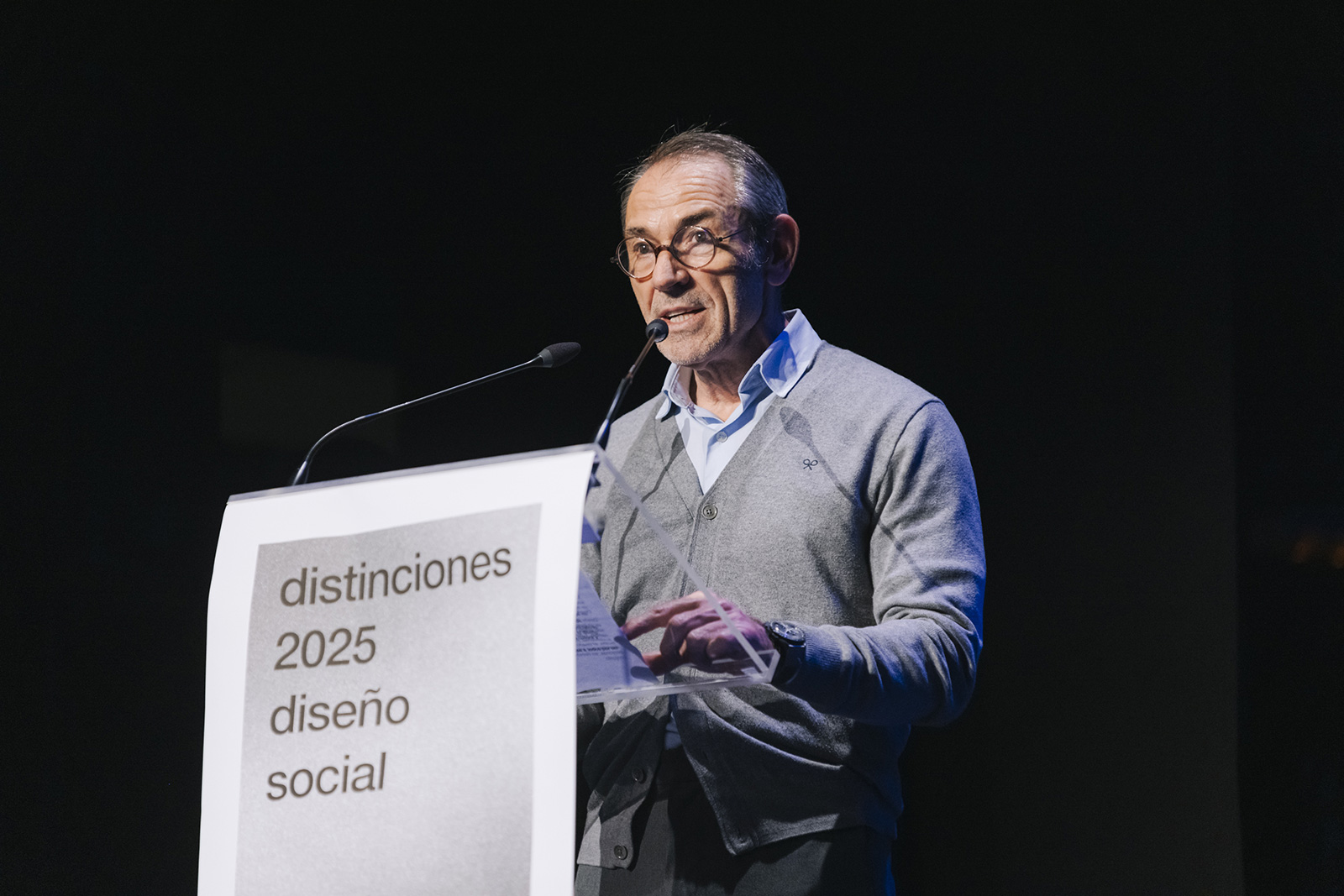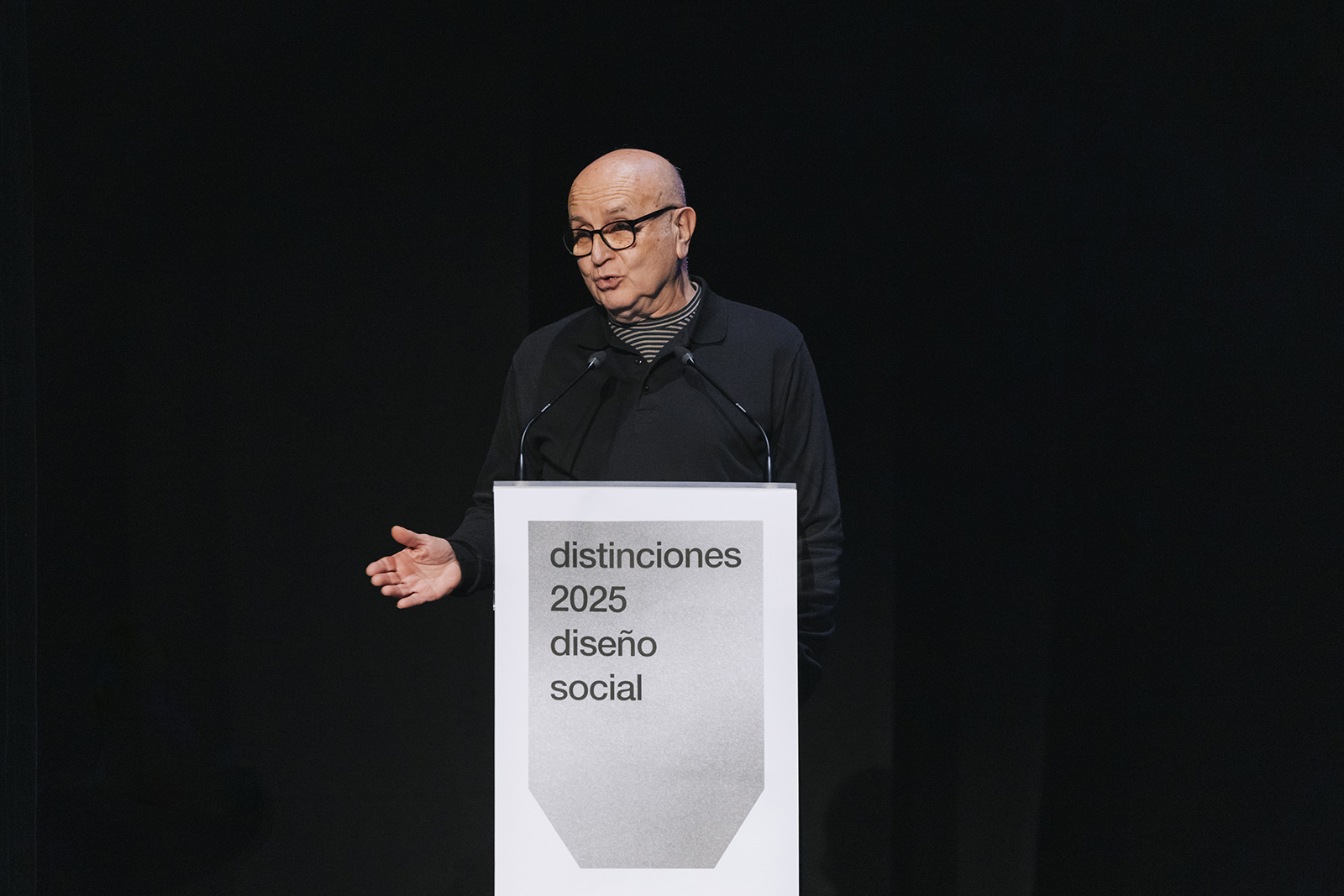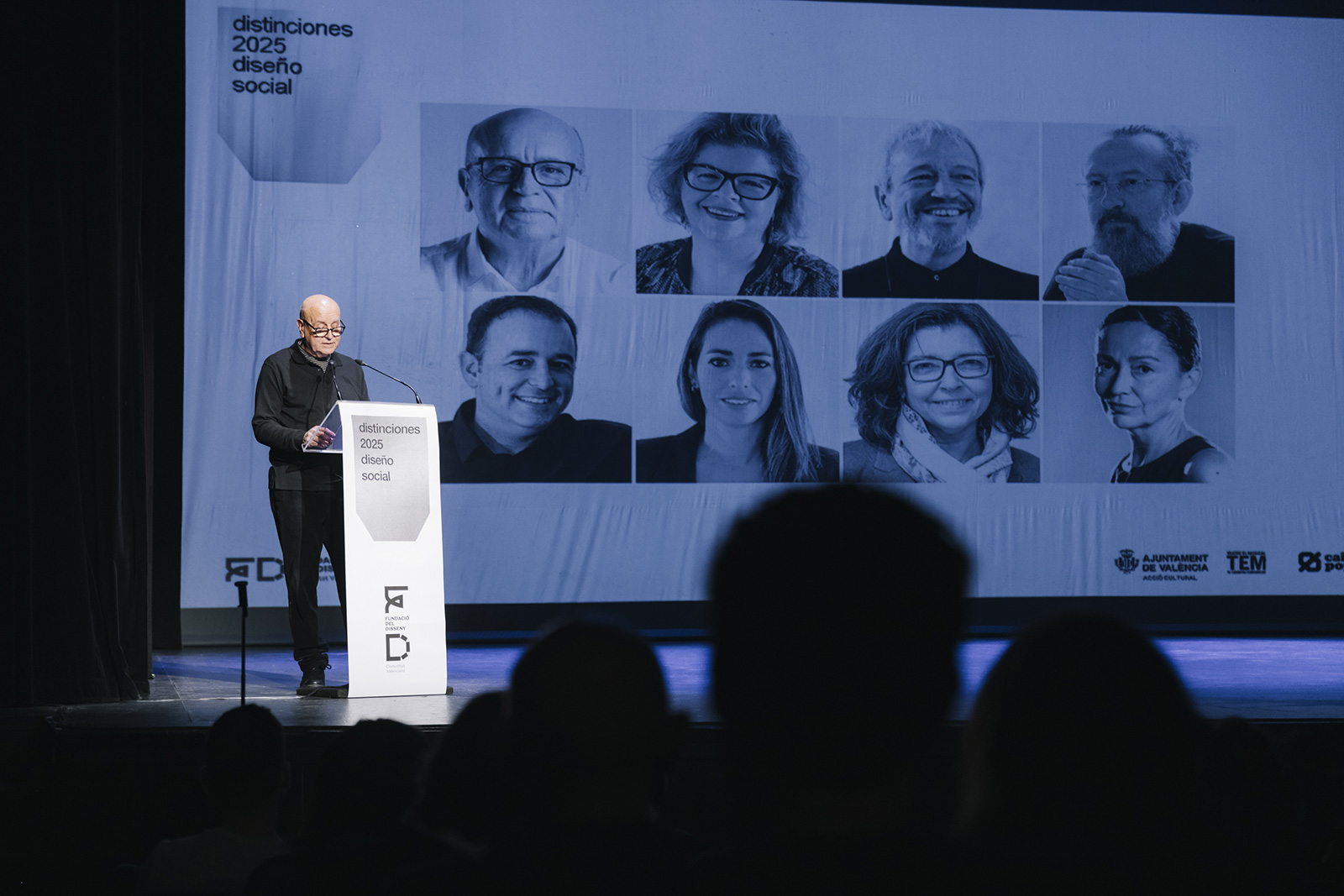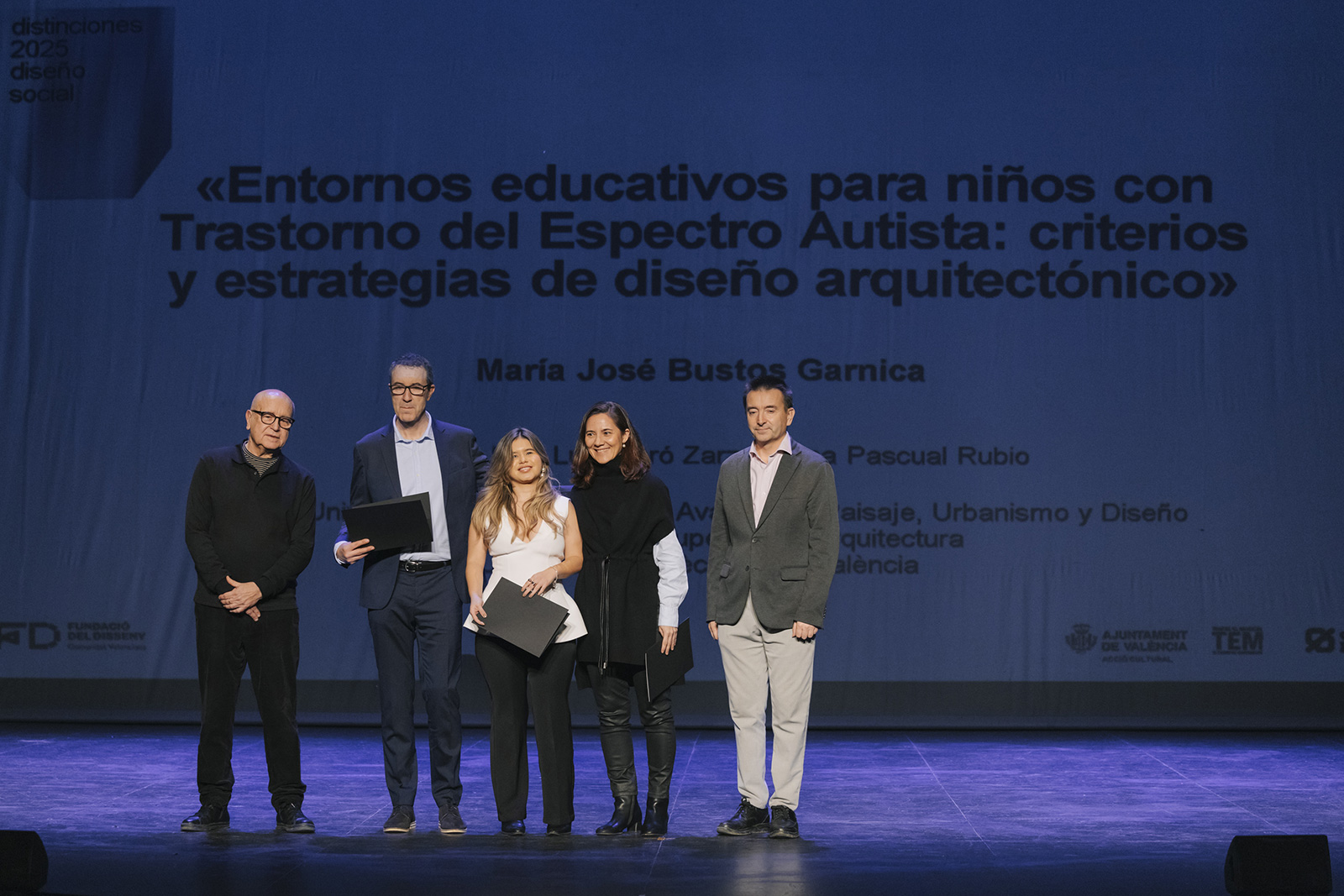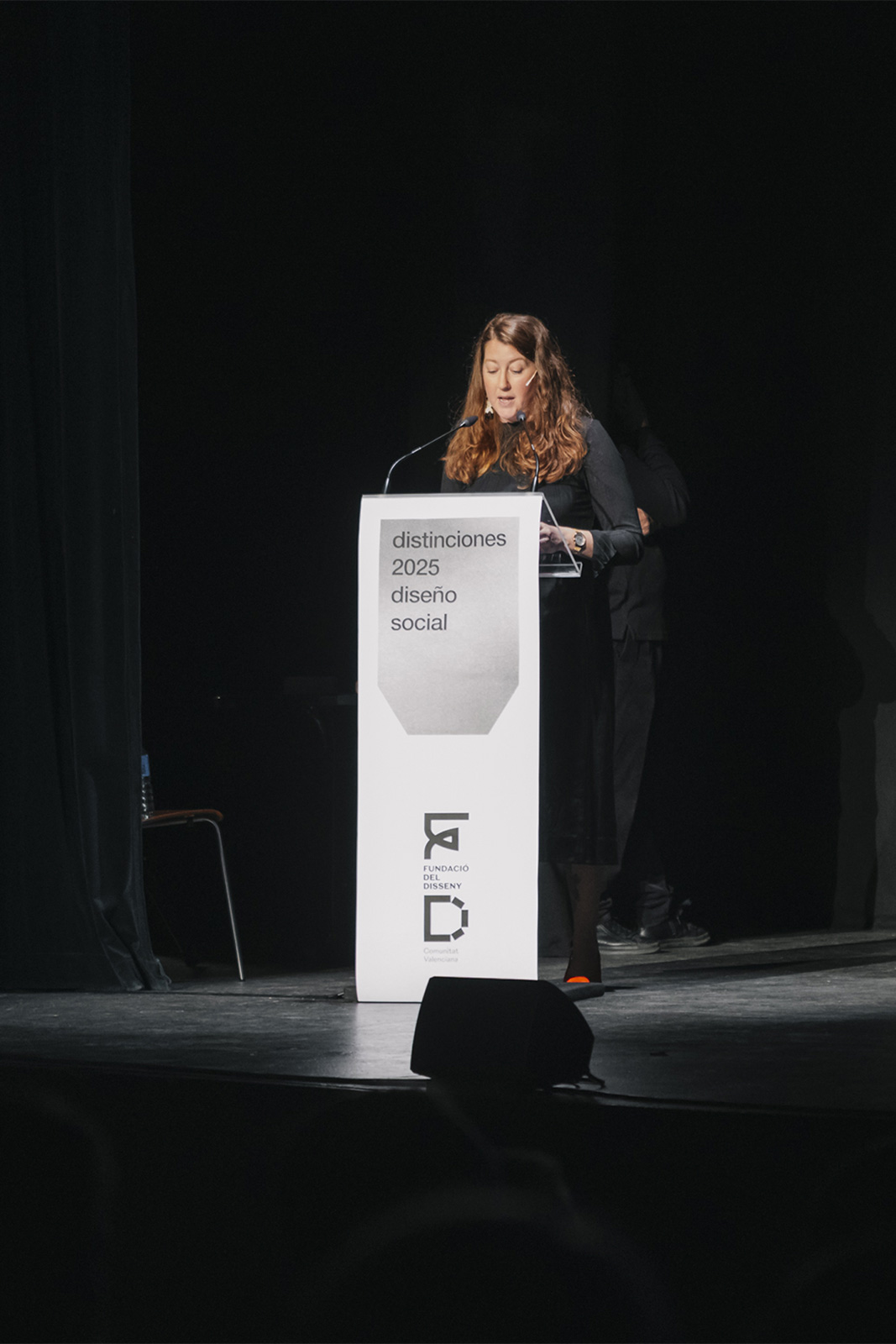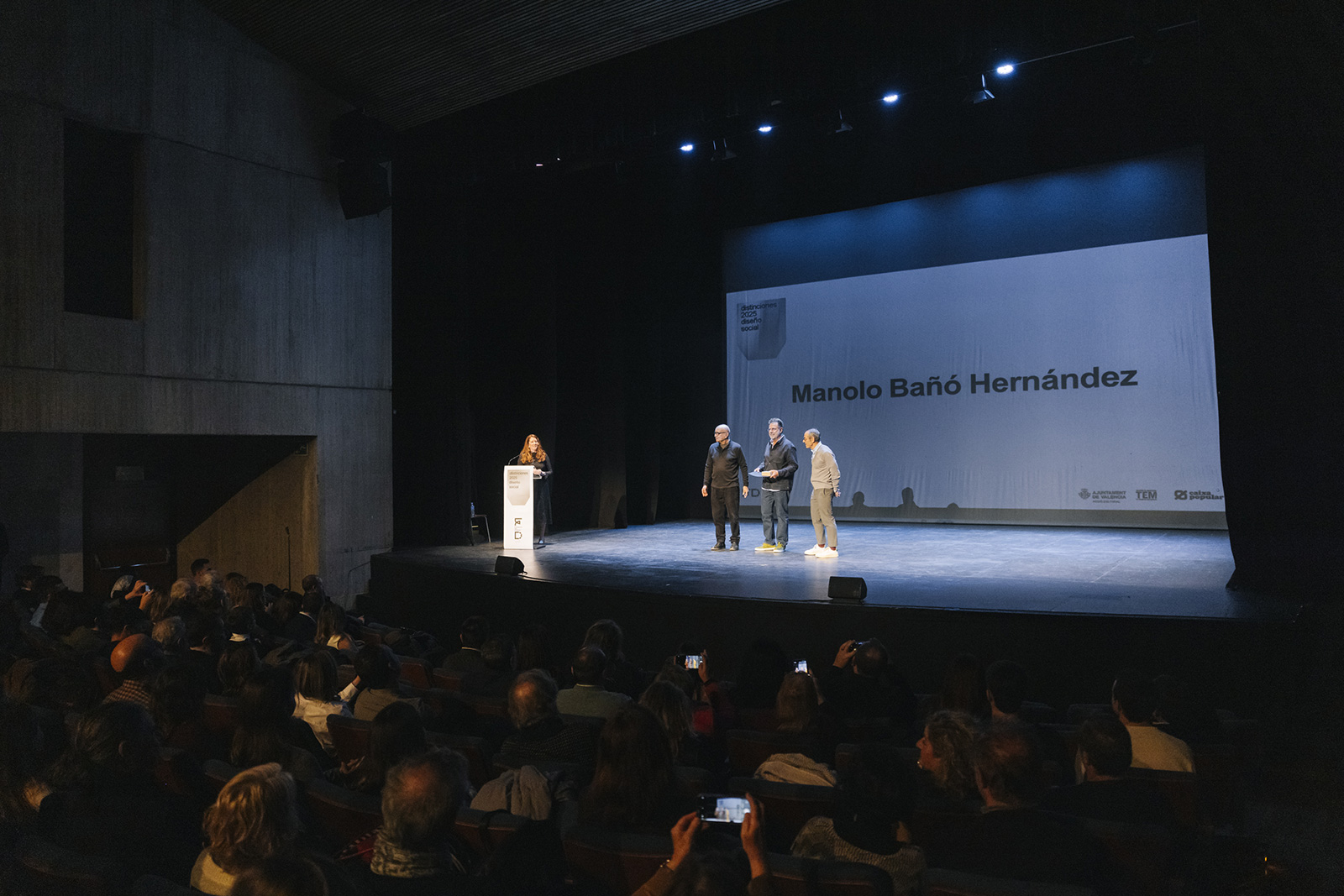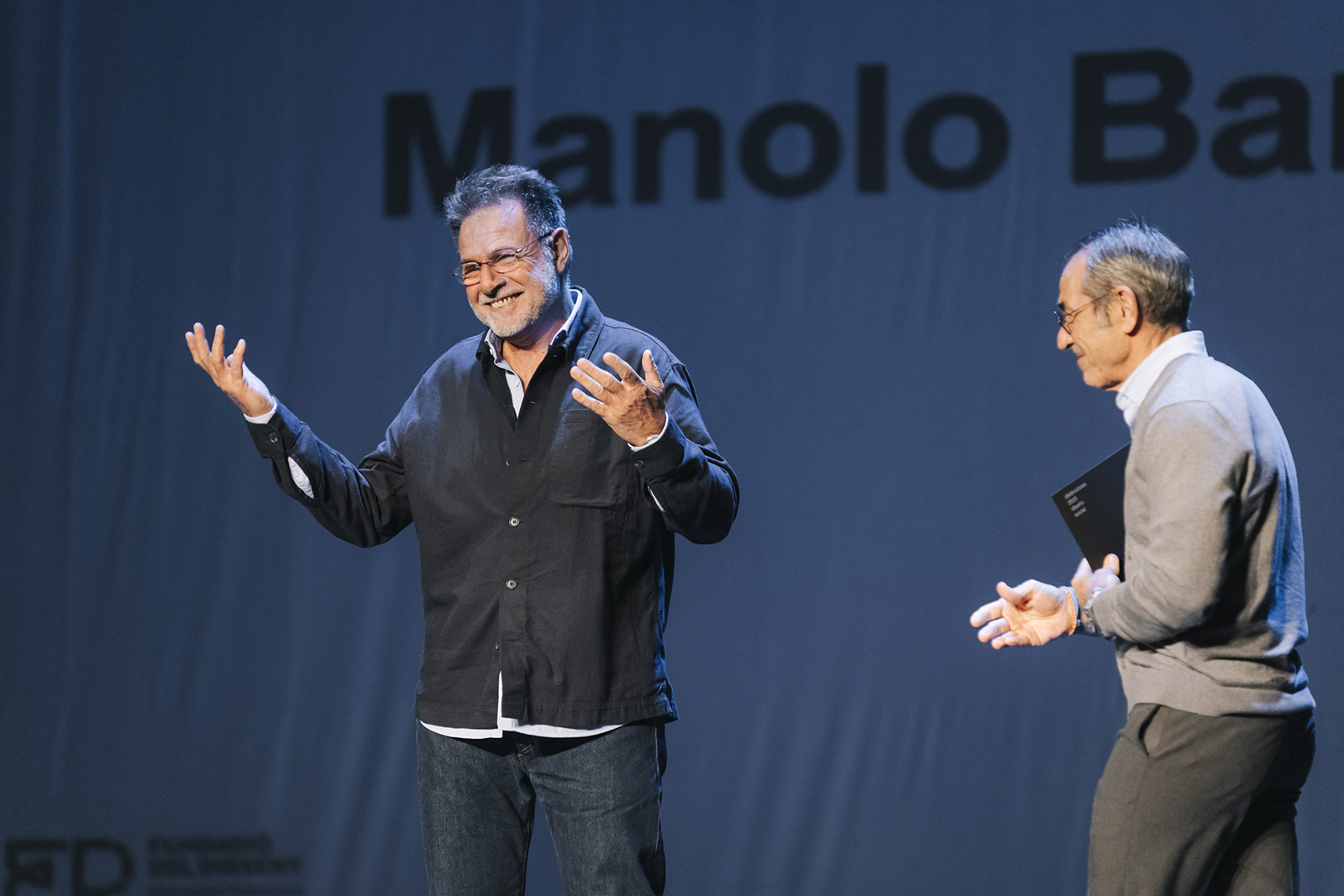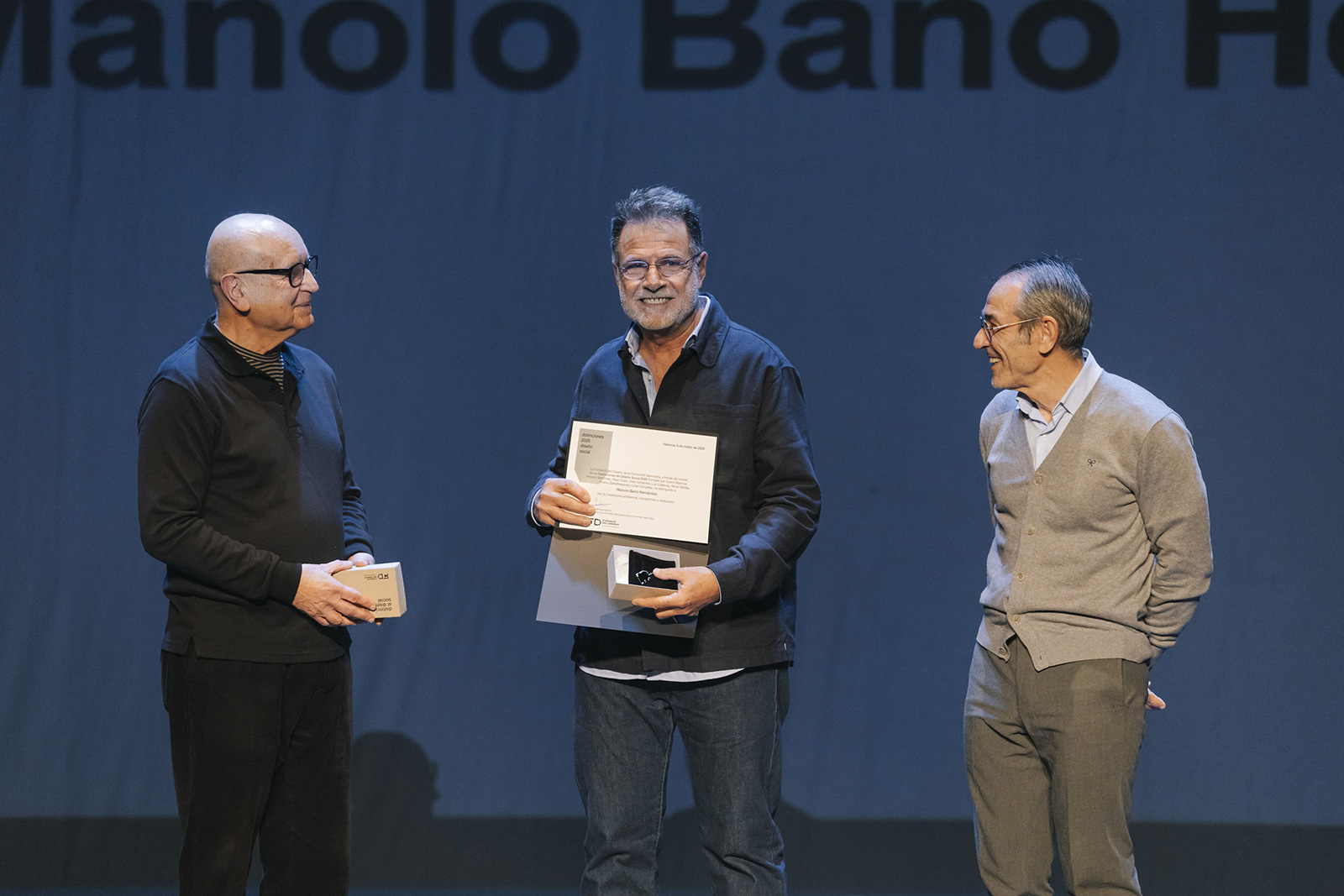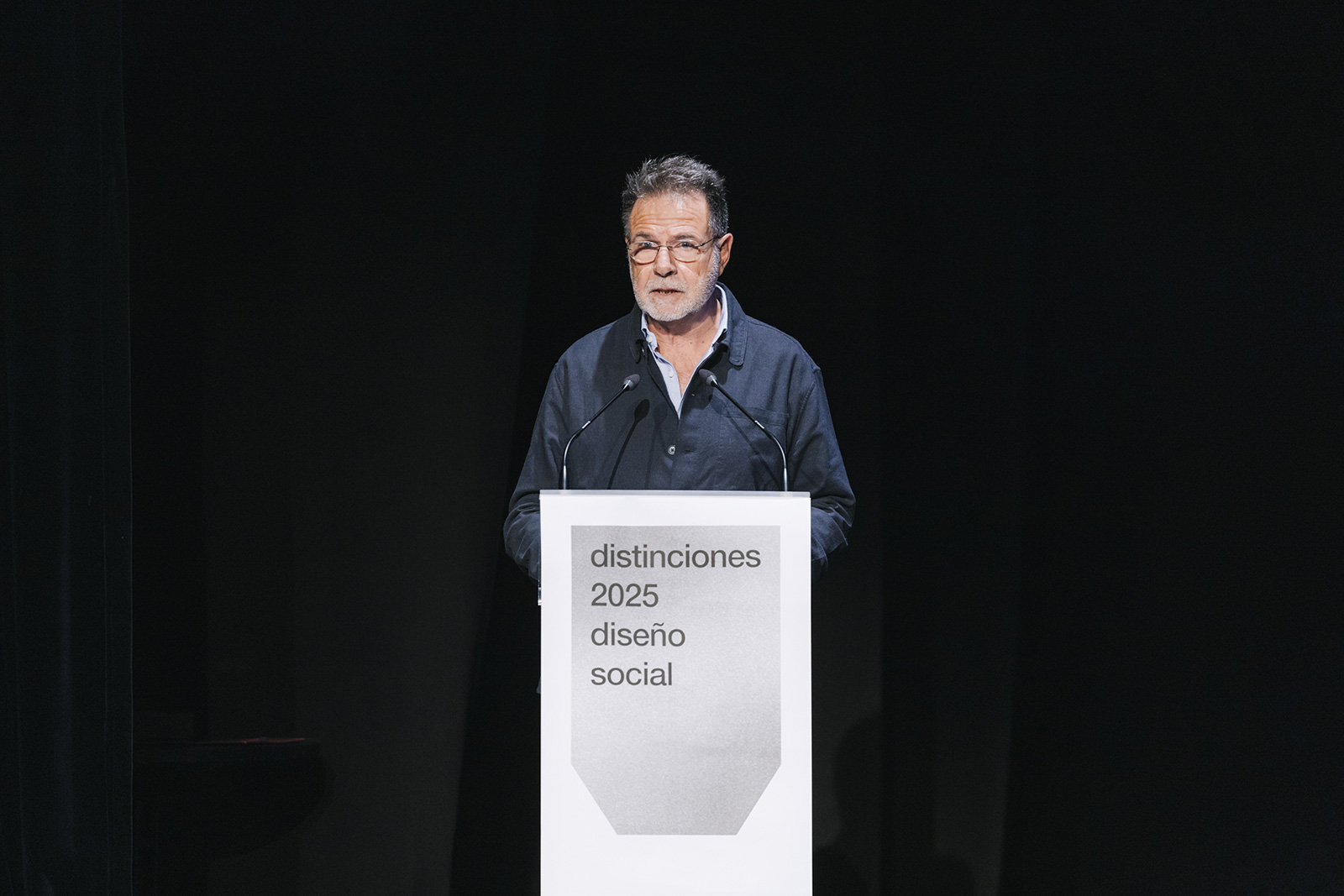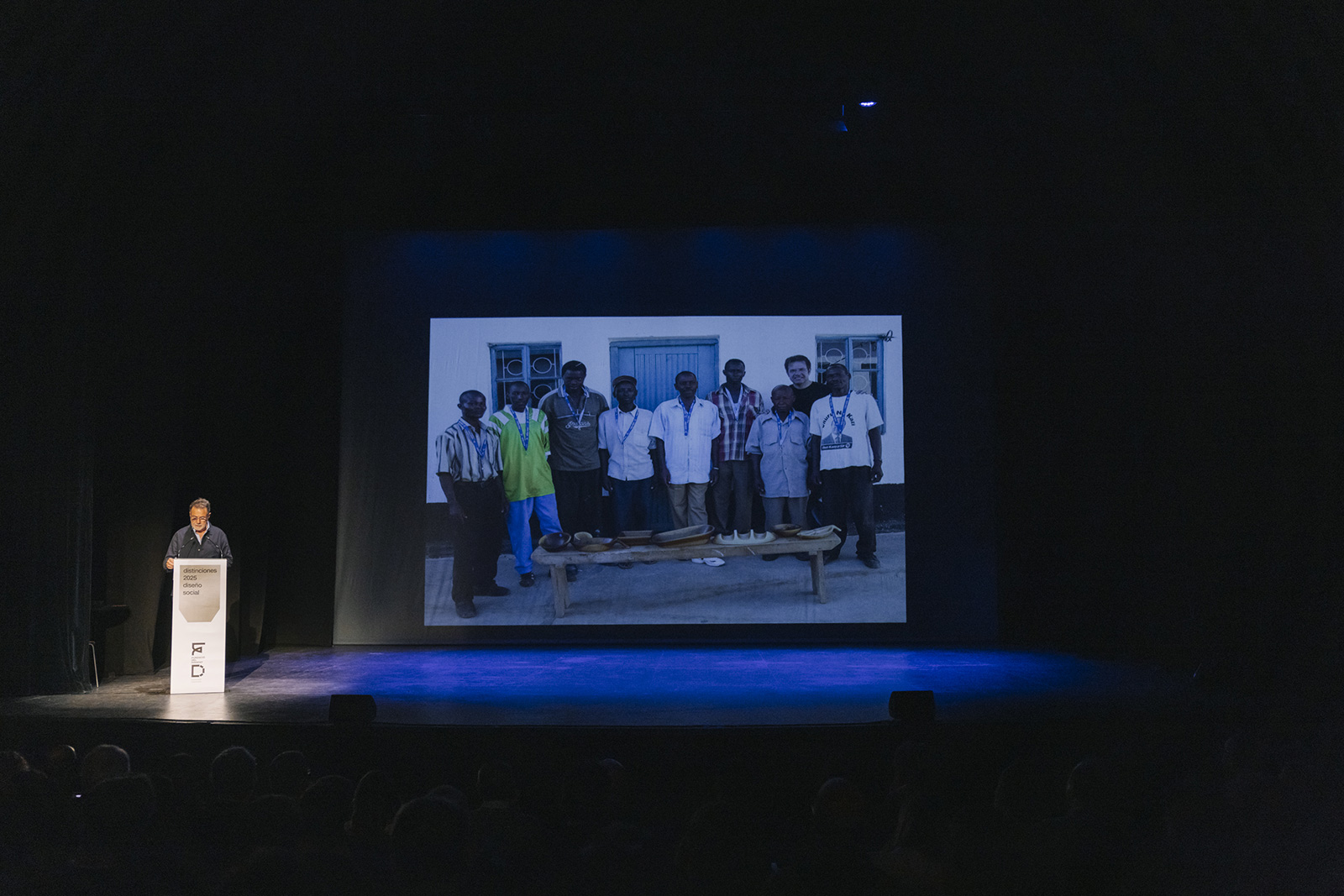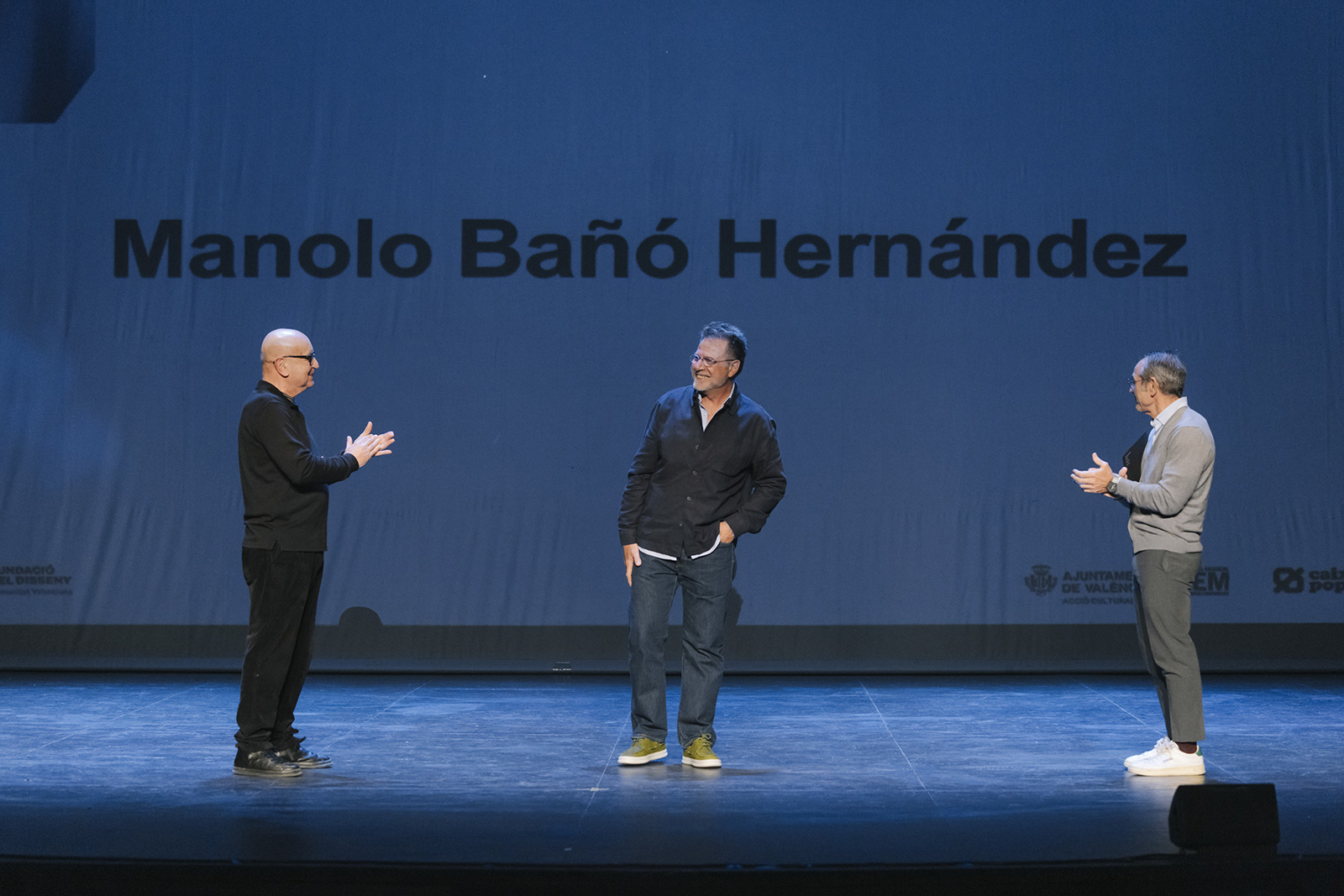Projects
News
Social Design Distinctions ceremony: A Commitment to Design and Society
Social Design Distinctions ceremony: A Commitment to Design and Society
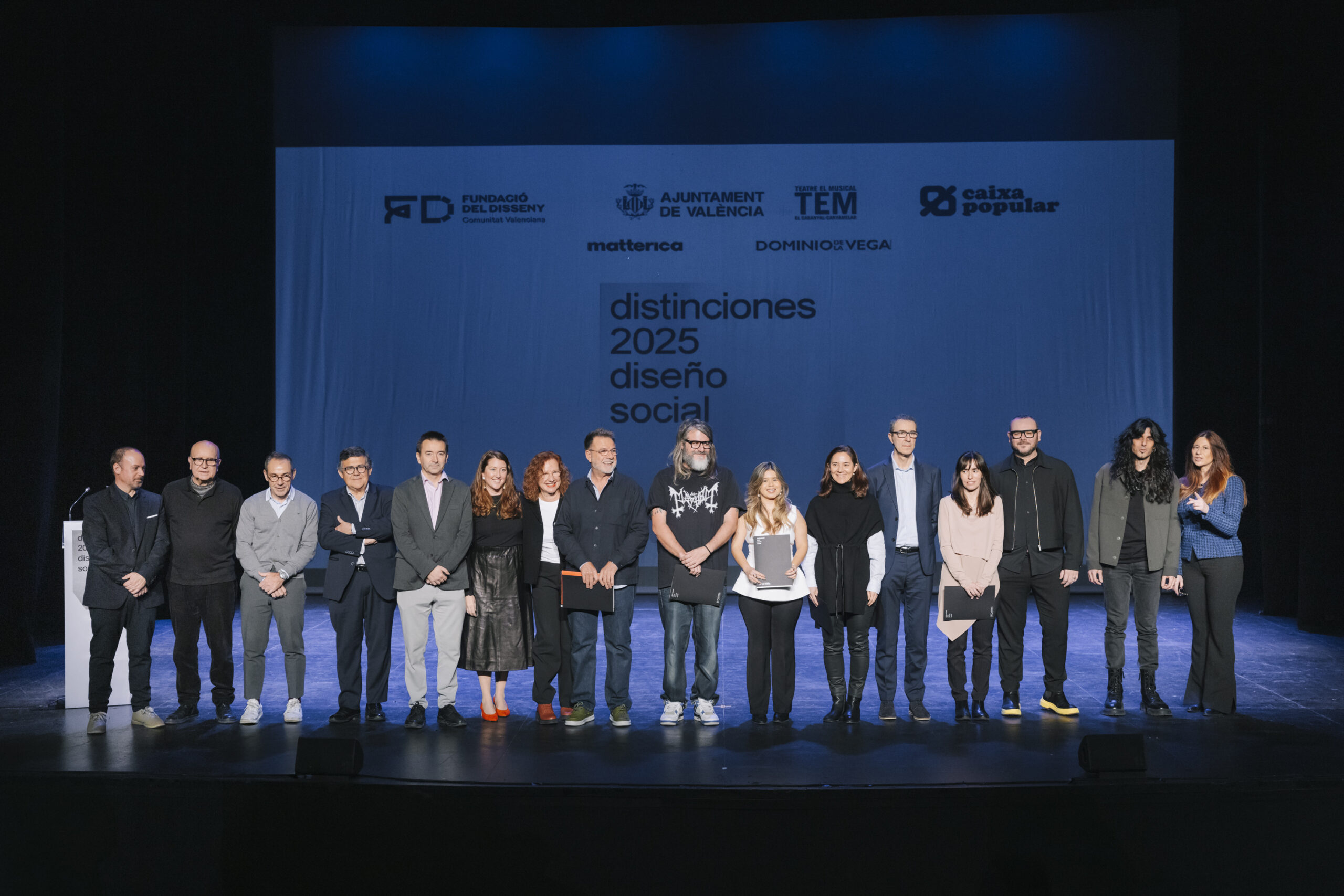
The first edition of the Social Design Distinctions is now a reality, and with it, we have focused on what truly matters: design with impact, with purpose, and with the ability to transform society.
More than 200 people joined us at the ceremony last Thursday at Teatre El Musical in Valencia, which was not only a ceremony for the delivery of distinctions but also a declaration of intent. The talent and career of Manolo Bañó and Hilary Cottam, two leading figures who show us that design is much more than aesthetics: it is a tool for change, were recognized. We also felt proud of the young Valencian talent represented by the exemplary projects of María José Bustos Garnica and Juan Manuel Pedro Aránega, who prove that the future of social design is in good hands from the design and architecture schools of Valencia.
The afternoon began with a reminder of the DANA that struck Valencia so severely four months ago, as expressed by the presenter, the expert communicator Ona Bascuñán: “Valencia’s creative commitment has been reflected even in the most difficult times, and the recent DANA reminded us of the fragility of our environment, but also the strength of our creativity.” This was also emphasized in his speech by the president of the Design Foundation, Vicent Martínez: “Because design not only solves problems, it also accompanies, raises awareness, and mobilizes.”
From the City Council of Valencia, the head of the Cultural Action Service, welcoming the event, also highlighted the role of design after the DANA as a response of solidarity and emphasized the social aspect of design, confirming that “from the public administration, we know that culture is a driving force for transformation, a tool that not only reflects our identity but also drives change.” He also insisted on the strong commitment to support initiatives that strengthen this path, helping design take the place it deserves within our culture and society.
The British Hilary Cottam, one of the honorees of the evening, also dedicated part of her gratitude for the recognition to the victims of the DANA. Cottam could not travel to Valencia due to being immersed in a new project that keeps her away and unreachable, but she recorded a message that was played at the ceremony, a speech in Spanish, as she herself shared that her childhood is linked to the Valencian Community and a family home in Jesús Pobre: “My experiences during those years were fundamental in shaping my work,” she stated. Hilary Cottam praised the Valencian design community that she admires so much and linked all this overflowing creativity to the craftsmanship and folklore related to local festivities: “This is a region with a rich history of design, visible everywhere, from the legacy of craftsmanship to the dazzling inspiration of world-famous architects, and also in what interests me, the work of everyday designers.”
Vicent Martínez, as president of the Design Foundation and also on behalf of the committee for these distinctions, wanted to highlight that, in their final decision on the recognitions, strategic and political goals were considered, thinking of a design that speaks about gender, class, and impact. The committee for this 2025 edition consisted of Vicent Martínez, Amparo Bertomeu, Pepe Cosín, Kike Correcher, Luis Calabuig, Lilian González, Xènia Viladàs, and Anatxu Zabalbeascoa.
The design of the distinctions themselves was revealed during the ceremony, with pieces of black onyx created from the Design Foundation’s brand symbol, designed and produced by Matterica, a Valencian studio that combines craftsmanship and design to create jewelry objects from both tradition and contemporary influences.
The recognition of the two final student projects was especially applauded by the audience. The Bachelor’s Degree Final Project in Graphic Design by Juan Manuel Pedro Aránega from the Escola d’Art i Superior de Disseny de Castelló, Fauna, el joguet dels parcs naturals, supervised by Ester Parra Sebastià, and the Master’s Final Project by María José Bustos Garnica from the Master’s in Advanced Architecture, Landscape, Urbanism, and Design at the Escuela Técnica Superior de Arquitectura at the Universitat Politècnica de València, Entornos educativos para niños con Trastorno del Espectro Autista: criterios y estrategias de diseño arquitectónico, supervised by José Luis Baró Zarzo and Ana Pascual Rubio, were the projects selected for the 2025 edition of the Social Design Distinctions, leaving clear evidence of the high level of the design and architecture schools in Valencia.
Manolo Bañó was the one to give a lecture as the grand finale of the ceremony and, after receiving, very moved, the distinction from Vicent Martínez and the representative from the City Council of Valencia, Bernard Gaspar, he wanted to highlight the great need and value of such projects to emphasize social design. Throughout his speech, which was truly a masterclass, he recalled his professional journey along the less-traveled paths of design, which led him 25 years ago to start working with fair trade, leading him to share this experience with his students through a social and collaborative design project then called Design for the Real World: “Creativity, or the ability to design, has been a fundamental activity for the evolution of the human being, and that is why it extends across all layers of society today. A superficial vision of design would lead us to think that design is about making functional and beautiful things, but in reality, the field of design is much deeper and more connected to the aspirations of people than to the objects they may own. Because, as we can see, since the beginning of humanity, creativity and design have served to improve the lives of people and communities, and objects have been mere tools to achieve this,” emphasized Bañó.
The concept of “design for change” was repeated throughout the afternoon, with a definition as a conclusion added by Manolo Bañó himself: “Since today we are talking about design, let’s start by defining it. For me, designing means, first and foremost, transforming. It is an intellectual and creative act that responds to the desire to change an existing situation for a better one. Design, therefore, is not an end but a means to build real solutions that transform lives. Design is the means, not the end.”
In conclusion, the designer stated: “Good design leads to progress, and progress is a success of society. Let’s build a fairer world, a world where design is truly a catalyst for human progress, a world where creating is a tool to transform lives and build a hopeful future for all, where design responds to the true needs of society… because, ultimately, design is either social, or it is not design.”
The ceremony was made possible thanks to the involvement and collaboration of the Department of Culture of the City Council of Valencia, Teatre El Musical (TEM), and Caixa Popular, an entity that supports the promotion of these social values, fostering their development from within the schools of the Comunitat Valenciana.
Another Valencian company, the winery Dominio de la Vega, served the honorary wine after the award ceremony with their first organic wines (a project strongly linked to sustainability and led by designer Inma Bermúdez).
We would like to personally thank the presence of the Head of the Cultural Action Service, Bernard Gaspar; the Director of External Relations at IVACE of the Generalitat Valenciana, Rafael Escamilla; the Director of Social Responsibility, Sustainability, and Institutional Relations at Caixa Popular, Paco Alós; representatives and the dean of the Colegio de Diseñadores de Interior de la Comunidad Valenciana, Colegio Territorial de Arquitectos de Valencia, the president and manager of the Associació de Professionals del Disseny de la Comunitat Valenciana, the management of the Escuelas Superiores de Diseño de Castelló and València, the Universidad CEU Cardenal Herrera, and the Universitat Politécnica de València, as well as the members of the board of trustees of the Design Foundation of the Region of Valencia.
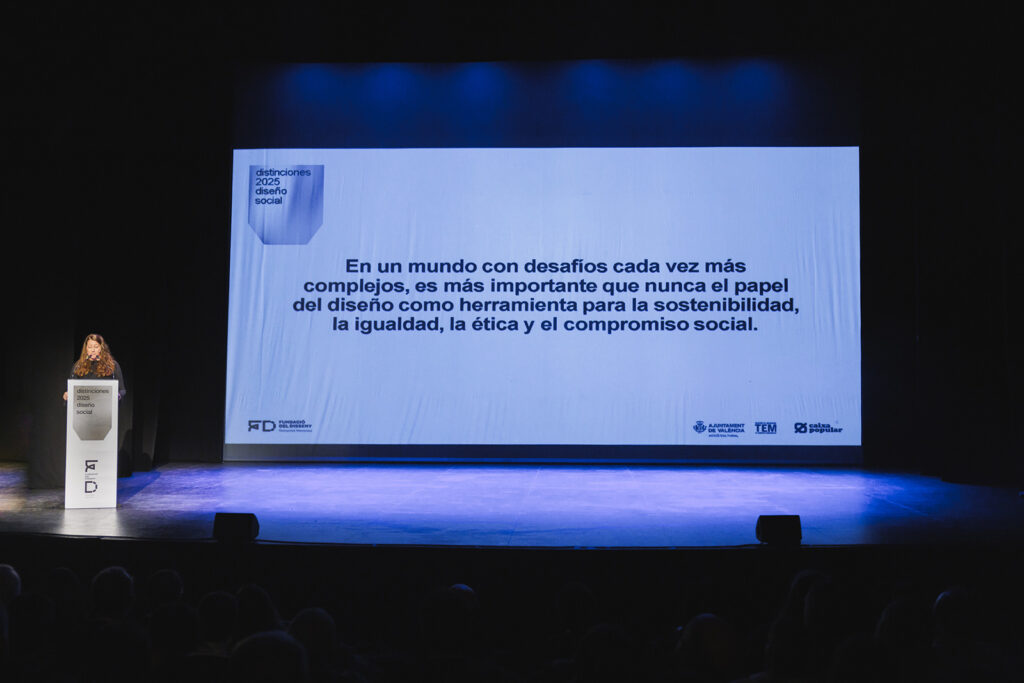
These recognitions have been created with a vision of continuity, with the commitment of the Design Foundation to give visibility to design that improves lives. It is not just an award; it is a responsibility. Because if one thing has become clear after this first edition, it is that social design is not a trend; it is a necessity.
Thank you to everyone who has been part of this edition. We move forward with pride and with the certainty that we are building something important.
See you at the next one!
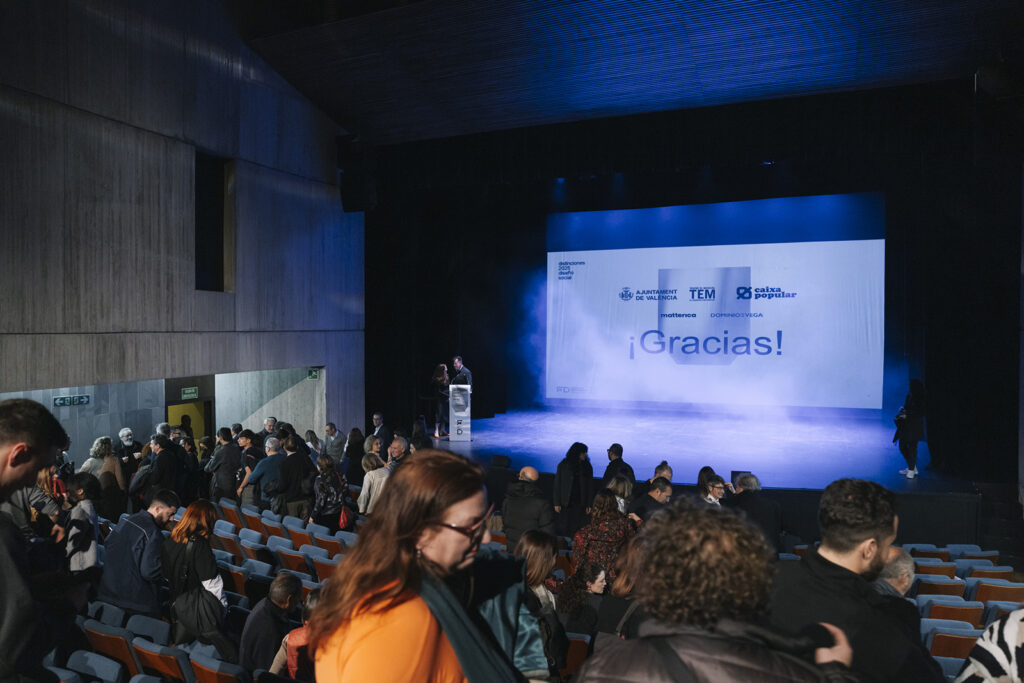
Photo: Brava Studio


